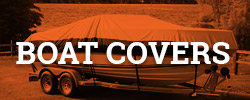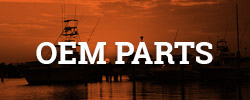Mariner Outboard Anodes
Mariner Anodes How-To's

Bonding
Bonding can be a technical process so if you need some help with installation then you should consult a technician. Bonding is a process to help you ... read more equalize the potential of all different underwater metal parts. You do this process by “bonding” two different metals to an anode with copper straps and wires. When two dissimilar metals connect in water, this is where corrosion will start as we have previously discussed. This is why you connect the two metals to an anode instead of the corrosion commencing on the needed metals such as an outboard motor. Bonding all metals to the anode keeps your beautiful boat and outboard motor looking like the masterpiece you brag about.
So here is a little bit about the process of bonding. Your main bonding conductor needs to be well above the bilge level, to the boat's common ground point at the engine block (and on battery). Be sure to use a #8 insulated-stranded wire and use the same type of wire for individual bonding connectors. Your entire setup will connect to your sacrificial anodes mounted to the transom of your boat. Internal electrical systems, such as outboard engines, a/c units, etc., will also be connected to the bonding system. Metal fuel tanks, fuel pumps, and other such things can be set up through this bonded system as well. Take a look at your boat, if you think metal is exposed to corrosion, the bonding set up can help prevent corrosion in very important parts and to your boat as a whole.
It is not recommended to do a bonding system on a wooden hulled boat. If you have to do a bonding system on a wooden hull, make sure you use an insulated bonding system. Also, there is no need to bond to boat trim tabs, they will not need an anode, so take note of that if you have trim tabs. Bonding makes things very efficient for your boat and is worth the time and investment in doing it. Your boat is sure to be a classic if you take these procedures to bond to the sacrificial anode. This bonding system protects your boat in many ways and has many advantages such as suppressing radio noise and protection against lightning. Boating is exciting, so keep that ride alive!
So here is a little bit about the process of bonding. Your main bonding conductor needs to be well above the bilge level, to the boat's common ground point at the engine block (and on battery). Be sure to use a #8 insulated-stranded wire and use the same type of wire for individual bonding connectors. Your entire setup will connect to your sacrificial anodes mounted to the transom of your boat. Internal electrical systems, such as outboard engines, a/c units, etc., will also be connected to the bonding system. Metal fuel tanks, fuel pumps, and other such things can be set up through this bonded system as well. Take a look at your boat, if you think metal is exposed to corrosion, the bonding set up can help prevent corrosion in very important parts and to your boat as a whole.
It is not recommended to do a bonding system on a wooden hulled boat. If you have to do a bonding system on a wooden hull, make sure you use an insulated bonding system. Also, there is no need to bond to boat trim tabs, they will not need an anode, so take note of that if you have trim tabs. Bonding makes things very efficient for your boat and is worth the time and investment in doing it. Your boat is sure to be a classic if you take these procedures to bond to the sacrificial anode. This bonding system protects your boat in many ways and has many advantages such as suppressing radio noise and protection against lightning. Boating is exciting, so keep that ride alive!





 Boats for Sale
Boats for Sale Advice
Advice





